We think every merchant we work with in our shop is special -- but when we find one with a great story, we'll be featuring them here. Because we want to tell the world about our favorite makers.
Today: Beth Sweeney of Coppermill Kitchen shares her secrets for vintage copper that shines like new (and is useful, too!). Shop for her newest pieces here.
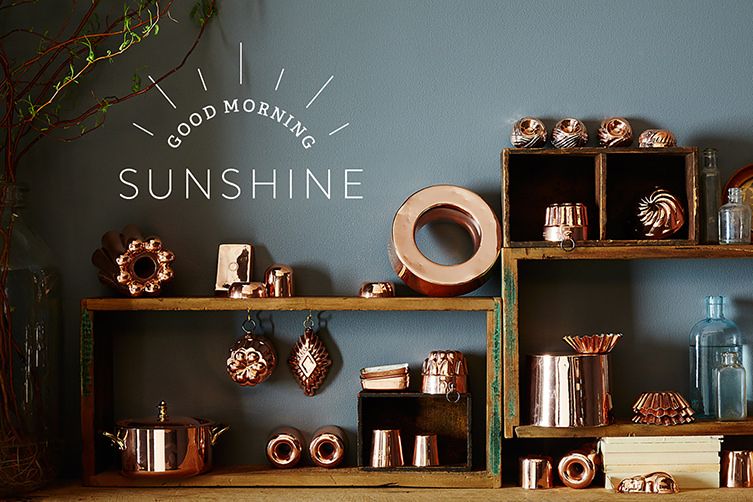
Our newest pieces from Coppermill Kitchen will brighten any day.
When Beth Sweeney says “my story is kind of gruesome, but it’s the truth,” I tense — how could anything about this beautiful copper be bad? But as she shares more — about a passionate (and copper-obsessed) bride, a business that launched during hard times, and the relentless nature of her restorations — I begin to understand. That warm, rosy sheen is the color of copper that was hand-forged centuries ago, long lost, then found by Beth and tediously restored. Gruesome? Maybe. But we'd rather think of it as enlightened.
Beth always loved copper kitchenware (when she got married, she registered for Mauviel) and as a buyer for a company that sometimes sent her overseas, she spent a lot of spare time poking around flea markets. Once in London during a dash to Portobello Market, she found a whole batch of restored vintage copper kitchen goods. “I just stood there for a half hour taking them in,” she remembers. “It was like night and day comparing my mass-produced copper back home with these pieces. Even the color of the old stuff is different — nearly pink! — which just really stood out to me.”
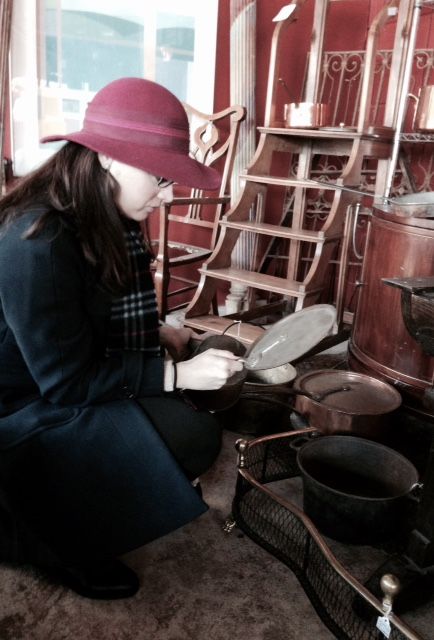

Beth's hunt for vintage copper is as thorough as her restorations; she often finds pieces black and blue with age.
On the spot, Beth had her first inklings of a vision for Coppermill Kitchen. But it was hardly the right moment to start a business: Around the same time, her husband fell ill and needed a double lung transplant. Beth started collecting copper to keep her spirits up, and had amassed a hundred pieces by the time he came home from his transplant. "We learned, truly, that life is short and that’s not a gimmick,” she tells me slowly. As soon as he was well enough, Beth quit her job and poured her heart into launching a line of restored copper pieces. She found Food52 online, got in touch with our Shop “almost instantly,” and sold out her first holiday season. The rest is history.
When I ask Beth about the restoration process, I envision a good scrub with Bar Keeper’s Friend and a Scotch pad. I am a rookie. “With all of our vintage pieces, I find them completely beat up,” she explains, “and then I have them restored by an expert.” I stifle some disappointment that this isn’t a project for my kitchen, but that turns to awe when she starts listing the endless, painstaking steps involved.
“We dip them in acid baths for however many days it takes to strip the residue, and then they go through a tinning process and removal of dents. If there’s planish (a very worn spot), those are polished out, and sometimes really loose fixtures need to be soldered. Black and rusty pieces can actually take two to three restorations, and I will send them back over and over to be redone. At minimum, it takes a month. I draw all over the pieces with a magic marker to point out flaws that need fixing.”
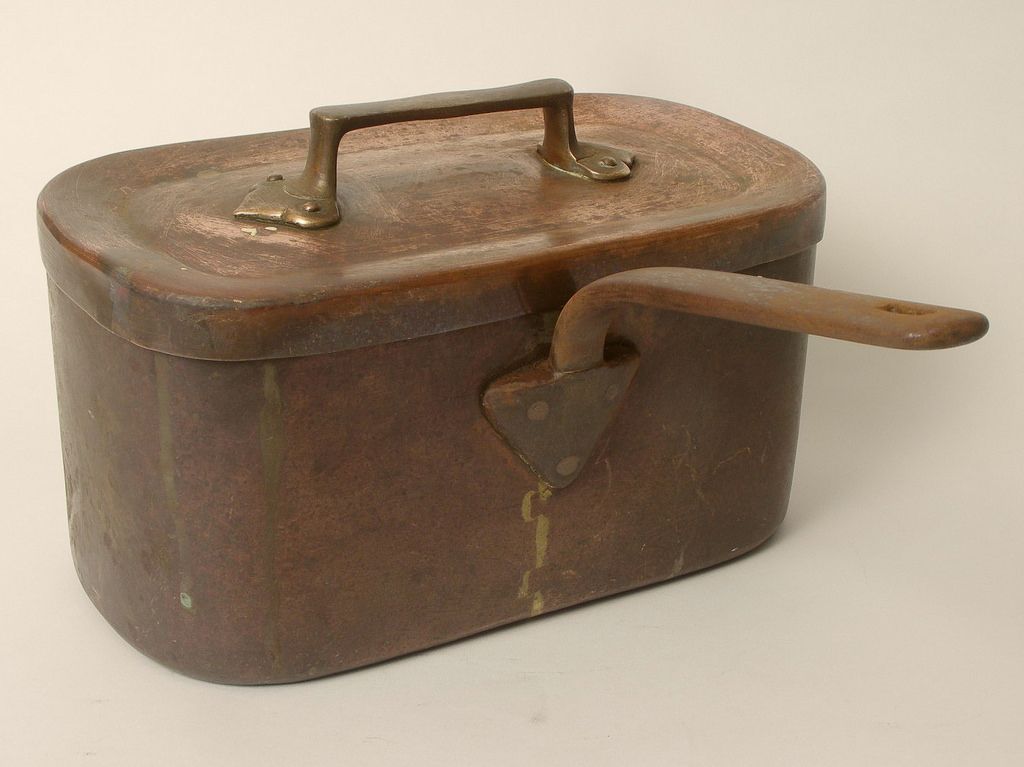
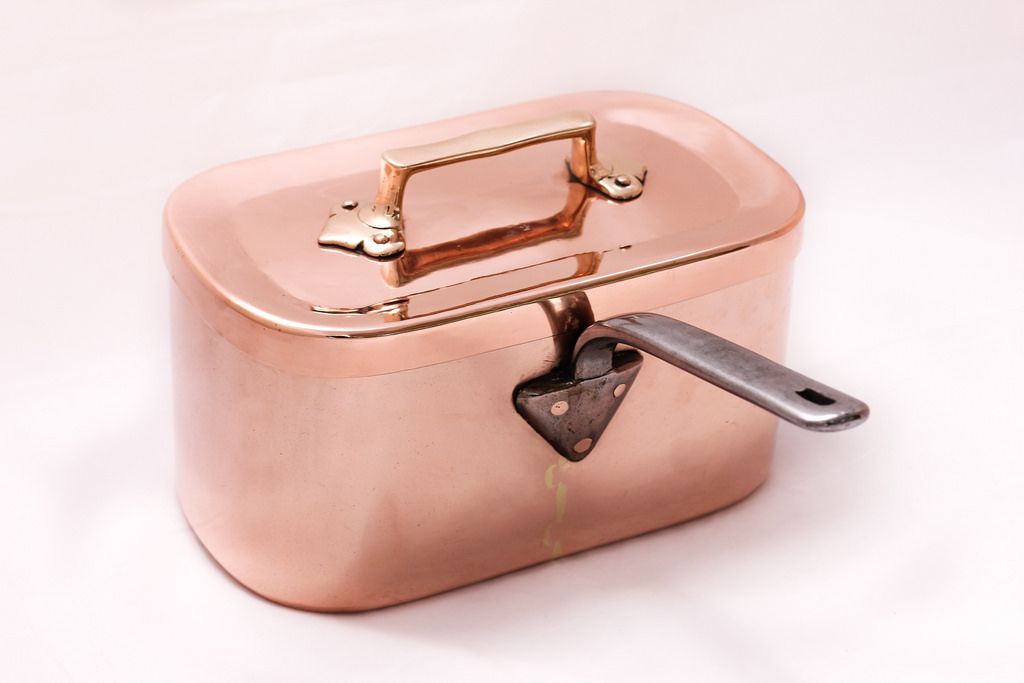
Beth's attention to detail is what makes her restorated pieces so high-quality.
Never satisfied, Beth is actually training (more like apprenticing) to restore copper herself — an incredible undertaking. “There’s not a single female out there who does the gruntwork,” she tells me, adding a warning from her teacher: “You can definitely lose a limb or get your hand removed during the polishing process.” (At least she prepared me that this would be gruesome.) But nobody is better equipped for this task than Beth, who is completely obsessive and meticulous when it comes to her copper restorations.
She applies the same rigor to the hunt for vintage. “There are lots of warning signs,” she says gravely, before lauching into her checklist. “What are the states of the handles — loose? How loose? Can they be tightened? What about rivets? And there are certain dents to be aware of, like crease dents, which you can pop out but will always leave a line. And if the dents are in corners? Forget it!” She pauses for a breath. “A piece can be sad, but it can’t be on death’s door. If it’s too far gone, I don’t even bother.” The picture she conjures for me is priceless: A sassy, petite woman standing in the middle of a flea market pouring water into every piece of copper to see if it leaks, with every merchant in the market looking on.
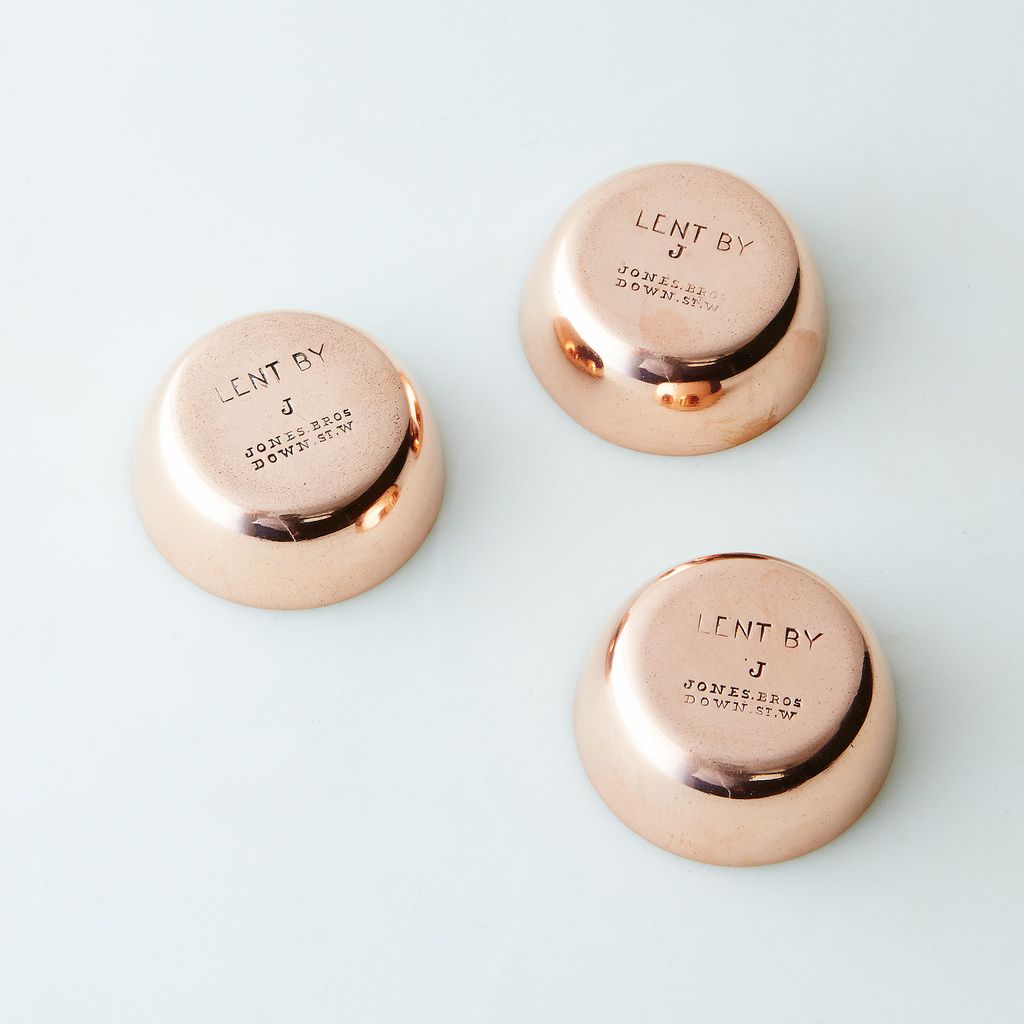
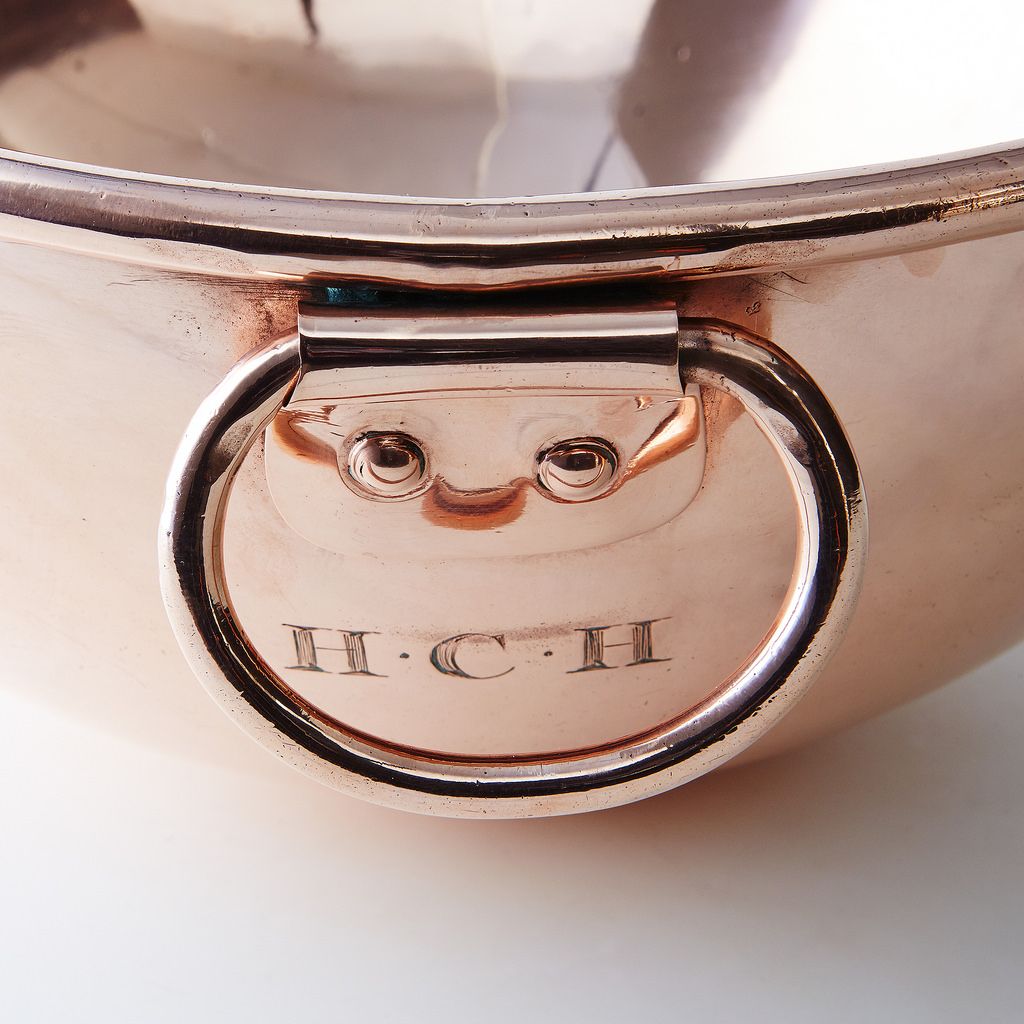
These mousse moulds and this 19th-Century mixing bowl are both marked with the original owner's information.
She also takes a rag and some cleaner for treasure hunting and digging up stories. “I’m super obsessed with finding pieces that have some history stamped on them, like the initial of a previous owner.” What kinds of stories, I want to know, and how does she research them? “It’s funny, really — Google tells you nothing,” she says without pausing, and I make a mental note to remember this more often. Relying mostly on books and by asking experts, she digs up whatever she can on a particular piece and jots it on an info card to be included when the object is purchased.
An adept storyteller, Beth starts in about a good find by setting the scene. “I was at the silversmith for something else," she begins, as if that's a completely average place to be, "and saw this old copper saucepan in the garbage heap, being rained on." After the briefest of pauses: "It was black like a shoe, and I just grabbed it. When I polished it, I found this a curious marking, which was a crown on its side." The sky darkens outside my window, where I sit on the edge of my seat. It turns out that the saucepan's marking was the Duke of York's. Each royal's symbol is unique — Beth has also found a smattering of pieces with Queen Victoria's mark.
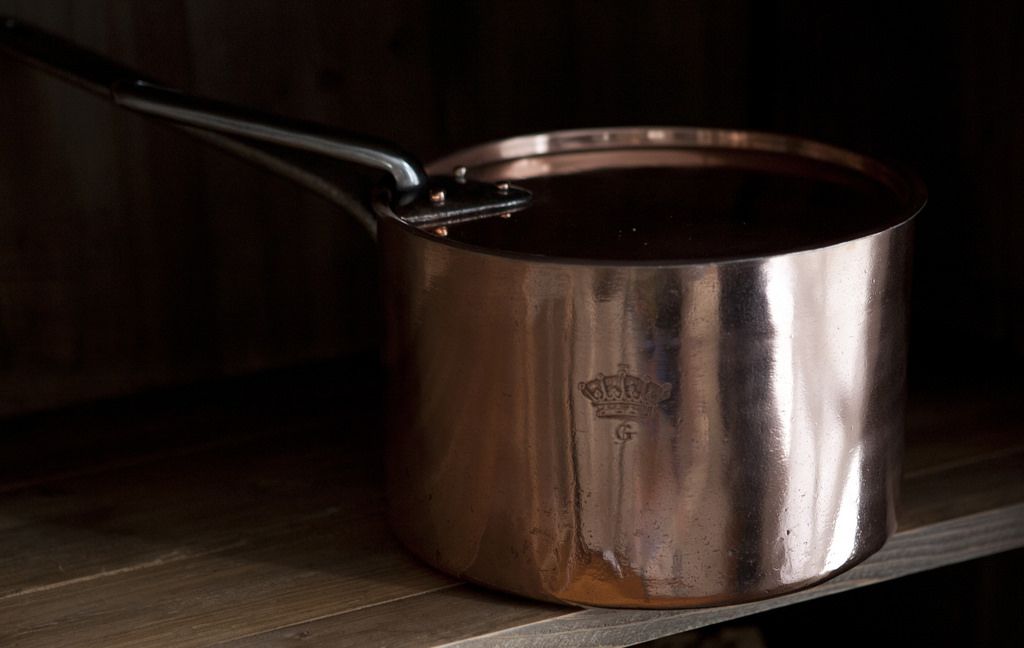
Sometimes, she finds stamps from the original owners.
When Beth really falls in love with a piece, she’ll have the design replicated in high-quality, thick-gauge copper (these little mini moulds and single serving bowls are her own creations), so more customers can enjoy them. Everything she sells is safe to use in a home kitchen, and will stand up to years of use with proper care.
If you're new to using copper in the kitchen, have no fear (and read Beth's tips from last year, or our piece on copper care). Just wash copper tools with soap and water and towel-dry after every use. A mild acid like ketchup (or powdered salt, dissolved in vinegar) will get spots out, but Beth says she only tackles a deep-clean once every six months or less (and it's fine to leave be if you like the patina). You might not be able to make a hundred-year old pot shine like new, as Beth can, but well-restored pieces are easy to polish.
"I love pretty things — using this copper is like putting bling in the kitchen," Beth tells me, and I can hear her swoon a little just saying so.
Thrifting, before and after, and final crown-stamped saucepan photos by Beth Sweeney; Opening image and product detail photos by James Ransom









See what other Food52 readers are saying.